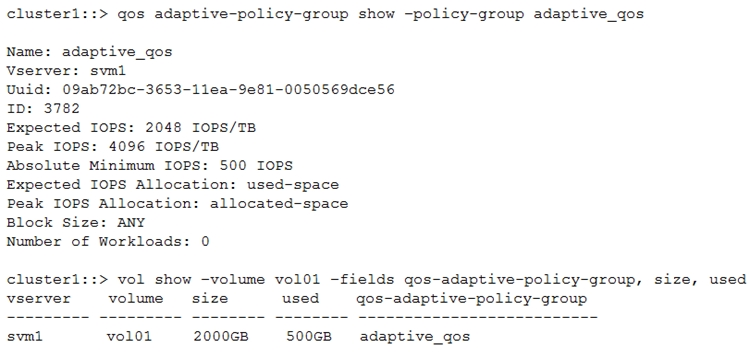Click the Exhibit button.

You have an ONTAP 9.7 cluster. You increased the size of the volume to 3 TB, but the IOPS did not increase as expected.
What are the expected IOPS for the volume after the change? (Choose the best answer)
Click the Exhibit button.

You have an ONTAP 9.7 cluster. You increased the size of the volume to 3 TB, but the IOPS did not increase as expected.
What are the expected IOPS for the volume after the change? (Choose the best answer)
The expected IOPS for the volume is calculated based on the policy group's parameters. The 'Expected IOPS: 2048 IOPS/TB' uses the used space as the basis for its calculations. In this case, the volume size has increased to 3 TB, but the used space remains at 500 GB. According to the policy, the expected IOPS value for 1 TB is 2048 IOPS, and for 500 GB, it remains at 2048 IOPS since it has not crossed the 1 TB threshold. Therefore, the expected IOPS remain 2048.
Correct answer is A - 2048. Expected IOPS value is 2048/TB (used-space). Even if the used-space is less than 1TB, the expected IOPS value is the same for 100GB, 500GB or 1TB. If used-space goes beyond 1TB, the expected IOPS will change to 2048x2=4096.
Torus is right. The answer is 2048. If you look at the expected iops allocation, you can see used space. And the used space is the same (500GB) Volume increased but the used space is same and expected iops is increasing according to it. The difference when you increase the volume is "peak iops allocation", but not the 'expected' iops. Definitely answer is A (2048)
Correct is C Because 2048 IOPs/Tb * 500Gb=1024
Yes C Expected iops on used space as in question
Is the answer B? 2048x3tb